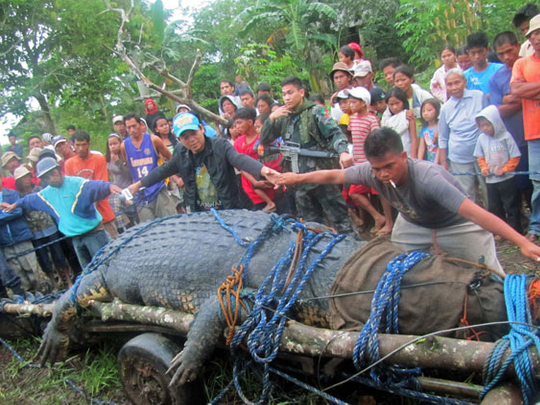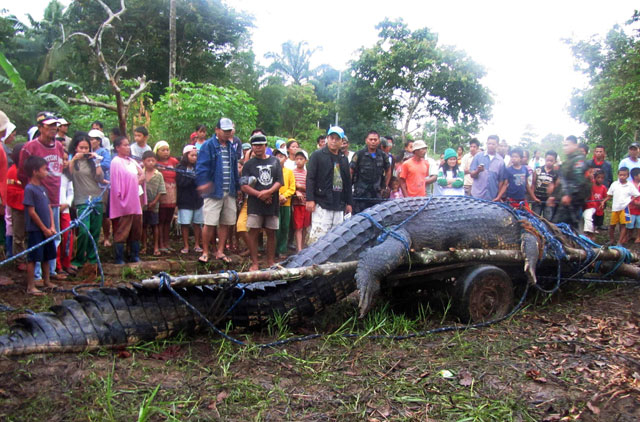
Manila: As conservationists and Southern Philippines town officials debate what needs to be done to a 6.1 metre long saltwater crocodile caught recently in the wild, authorities ponder ways how wildlife and humans co-exists without taking toll on each other.
"…We also have to take a look at the situation on how we could harmonise or promote the co-existence of the people and the crocodiles and other wildlife in the Agusan Marsh," said Environment and Natural Resources Secretary Ramon Paje as he referred to a wildlife reserve in Mindanao, the Agusan Marsh Wildlife Sanctuary where the huge crocodile had been taken since his capture last September 4.
Bunawan Agusan del Sur Mayor Edwin Elorde had helped catch the crocodile, since referred to as "Lolong," together with a team of hunters.
While the capture of the reptile, believed to have been responsible for the killing of a local child and a bufallo was welcomed by residents, was initially hailed, the seizure drew strong reactions from wildlife conservationist groups who opposed plans to keep the reptile in captivity.
"While there may have been reports and allegations that the said crocodile has threatened and caused danger to humans and their properties, please note that about 76,000 hectares of the Agusan Marsh is a protected area and thus measures to keep it secured from human intrusion thereby protecting its animal inhabitants should have been done instead rather than hunt them, especially the suspected man-eating crocodile," Animal Kingdom Foundation (AKF) director for operations, Luis Buenaflor said in a letter addressed to Elorde and sent by e-mail to media outlets.
AKF also deplored plans to turn Lolong into an "asset", tourism-wise, by showcasing its size and story.
Paje, for his part, said while Elorde and his men deserve to be commended for capturing the crocodile, he added that the issue at hand not only concerns "Lolong", but the bigger picture of the Agusan Marsh ecosystem---humans and wildlife included.
"Our conservation effort should not end with the capture of ‘Lolong'. While its capture comes as a big relief to the residents, some of whom may have experienced crocodile attacks in the past, we also have to take a look at the situation on how we could harmonize or promote the co-existence of the people and the crocodiles and other wildlife in the Agusan Marsh," Paje said.
He citing the Agusan situation as an "example of growing human-animal conflict." Paje underscored the need for the immediate passage of the land-use bill by Congress. "The land-use plan is an important policy instrument that would address increasing land-use conflicts, including wildlife-human settlements," he said.












